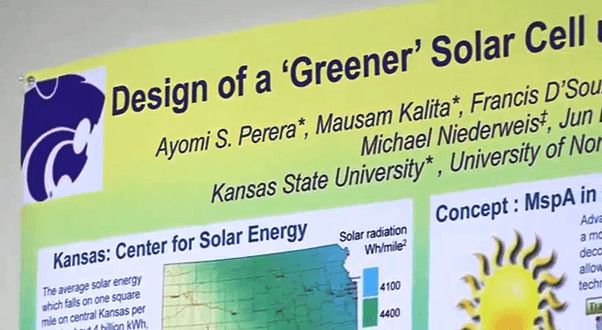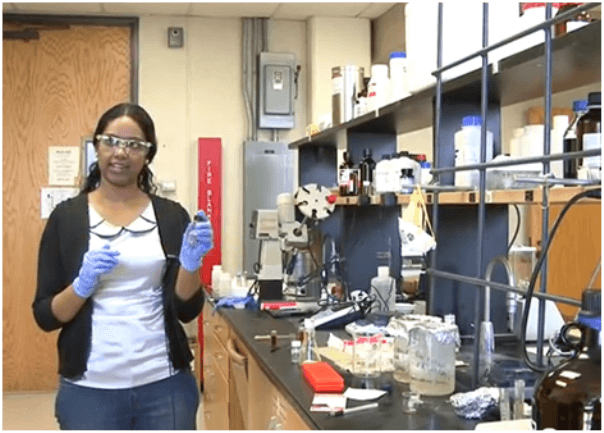Solar cells made with biodegradable components are extremely rare. Ayomi Perera, a Kansas State University doctoral student, created dye-sensitized solar cells out of a protein produced by bacteria and a dye less toxic than traditional dyes. This attractive new research might make solar power even greener.
Dye-sensitized solar cells have been around for decades, and although production is affordable, a few problems burden their potential. Their energy conversion efficiency is only about 11 percent. In the standard p-n junction photovoltaic cells, advances in technology have enabled commercial production of cells with efficiencies upward of 20 percent. In general, dye-sensitized cells continue to improve in efficiency and design, but Perera decided to focus on another problem—the dyes and solvents commonly used in dye-sensitized solar cells can be toxic to people and the environment.

Based on the principle of photosynthesis, the process in which plants convert sunlight into food, modern dye-sensitized cells are made of conductive glass with a porous layer of titanium dioxide nanoparticles covered in a molecular dye. The dye absorbs sunlight just as chlorophyll does in plants. With immersion in an electrolyte solution (often a corrosive material), a platinum-based catalyst adds the final component necessary to create electricity via the dye-sensitized cells.
Perera turned to bacteria for help in creating a less toxic version. Under the guidance of Professor Stefan Bossmann, Perera investigated the bacteria Mycobacterium smegmatis. The strain is relatively safe and easy to grow. It produces MspA, a protein which, when purified, has “so many applications due to its interesting surface chemistry,” according to Perera. Production of solar cells with a protein component became the focus of her research. The protein is mixed with an environmentally friendly dye, and a coat of the mixture is applied to the solar cells. Sunlight hits the dye, which produces electrons, and the protein transfers them in one direction, creating an electric current.
Research is still in the early phases, but tests have shown that the protein appeared to be stable and functional under testing conditions in incident sunlight. “This type of research has not been done before, where you have a biodegradable or environmentally friendly component inside a solar cell,” said Perera. “We have also synthesized a new dye which is less toxic than the dyes normally used in dye-sensitized cells,” she added.

At the ninth annual Capitol Graduate Research Summit in Topeka this year, she won a $500 scholarship and a chance to present her poster, “Design of a ‘Greener’ Solar Cell using Mycobacterial Protein MspA,” at the KansasBio Board of Director’s meeting in May.
“We know that fossil fuels are going to run out in the very near future,” Perera said in a Kansas State University news release. “Kansas is getting a reputation as one of the central places in the U.S. for alternative energy research because of the abundance of sunlight and wind. I want to contribute to that and to the betterment of humanity with this research.”